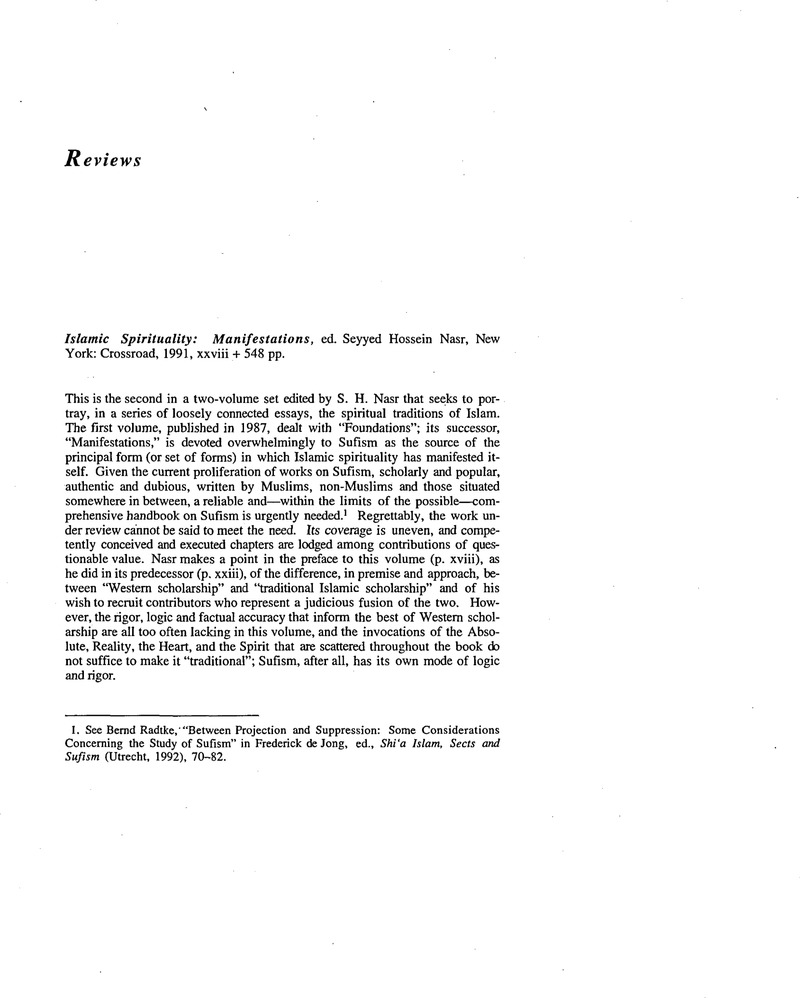No CrossRef data available.
Published online by Cambridge University Press: 01 January 2022

1. See Radtke, Bernd, “Between Projection and Suppression: Some Considerations Concerning the Study of Sufism” in Frederick de Jong, ed., Shi'a Islam, Sects and Sufism (Utrecht, 1992), 70–82Google Scholar.
2. See Ziauddin, Sardar, “A Man for All Seasons?” Impact International 23, nos. 23–24 [December 1993]: 33–6Google Scholar.
3. See DeWeese, Devin, “The Eclipse of the Kubraviyah in Central Asia,” Iranian Studies 21, nos. 1–2 (XXX): 45–6CrossRefGoogle Scholar.
4. For a different view of the question of the succession to Munis ‘Ali Shah, together with supporting documentation, reference may be made to Nur al-Din Mudarrisi Chahardihi, Silsilahā-yi ṣūfiyya-yi Īrān (Tehran, 1360 Sh./1981), 212–27.
5. See Kashifi, Fakhr al-Din Va'iz, Rashaḥāt ‘ayn al-ḥayāt, ed. Mu'inian, ‘AH Asghar (Tehran, 2536 Imperial/1977), 1:47Google Scholar, 50. ‘
6. Al-Nawāqiḍ li bunyan al-rawafid, MS British Library Or. 7991, fol. 96 a.
7. See Olson, Robert, The Emergence of Kurdish Nationalism (Austin, 1989), 6Google Scholar.
8. Rawḍat al-jinān wa jannat al-janān, ed. Ja'far Sultan al-Qurra'i (Tehran, 1349 Sh./1970), 2:159.
9. See Ja'fariyan, Rasul, “Rūyārū'I-yi faqīhān va ṣūfīyān dar ‘aṣr-i Ṣafavī,” Kayhān-i andīsha 33 (Azar-Day 1369/November-December 1990): 101–27Google Scholar.
10. See Madelung, Wilferd, Religious Trends in Early Islamic Iran (New York, 1988), 22Google Scholar, 26.
11. See Baysun, M. Cavid, “Emir Sultan,” Islam Ansiklopedisi 4:261Google Scholar.
12. On this period in his life see Keddie, N. R., Sayyid Jamal ad-Din “al-Afghani” (Berkeley & Los Angeles, 1972), 81–128Google Scholar.